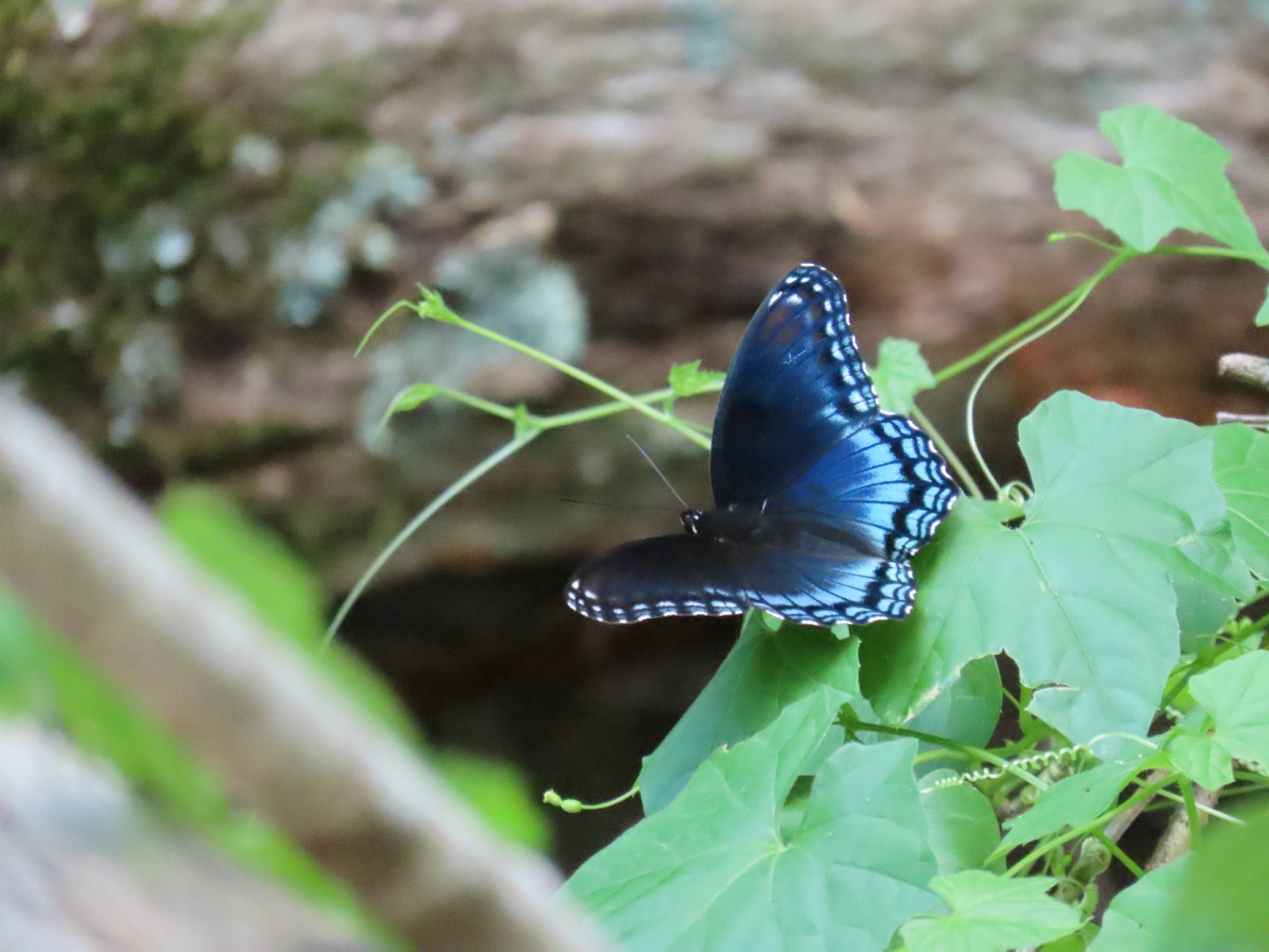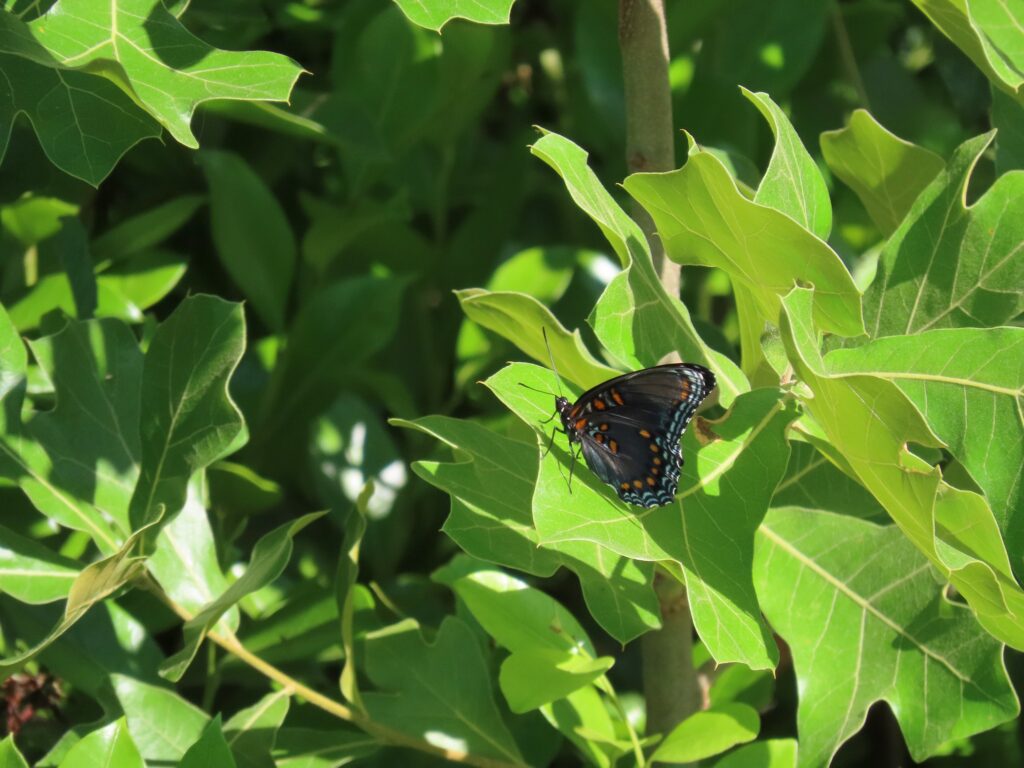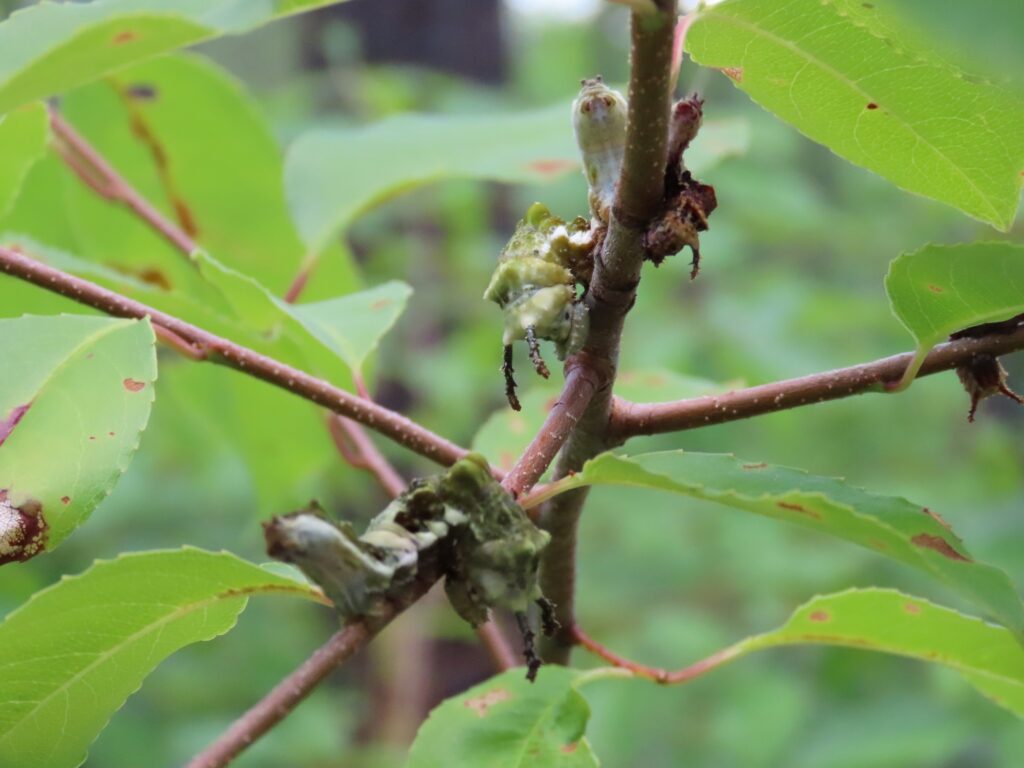




This week for Flora and Fauna Friday we’ve got a two-faced cherry-picking butterfly, the Red-spotted Purple (Limenitis arthemis astyanax).
The Red-spotted Purple is a common woodland butterfly found throughout the Eastern United States. It’s a moderately-large butterfly found along forest edges, dirt roads, walking trails, and orchards. They are partial to landing on bare ground to lap up minerals from damp soil. You’re just as likely to see them on the ground as you are on a flower, and they’re hard to miss! The Red-spotted Purple has a black base color. On the top of the wings it is washed in a vibrant sky-blue iridescence. This blue and black is complimented by fine white marks on the wing margins and a handful of orange spots at the tips of the forewing. Underneath, bold orange spots dominate the pattern, flanking the wing margins atop waves of powder-blue crescents in a sea of faint, blue iridescence. They are one of our most striking butterflies. The Red-spotted Purple’s caterpillars host on several groups of woody plants including willows, blueberries, and cherries. Black Cherry is their preference around Edisto Island. Both the larvae and pupae of Red-spotted Purples mimic bird droppings.
The Red-spotted Purple is a subspecies of the White Admiral (L. arthemis), which is found along the Great Lakes and in New England. The two subspecies have markedly different color patterns but are still all one species. The White Admiral has a heavy white band across each set of wings. This white band is totally absent in our Red-spotted Purple, instead replaced by extensive blue iridescence. The red-spotted Purple is in the same genus as the Viceroy (L. archippus) and these two species share similar body shapes, behaviors, and ecologies. One of those shared traits is mimicry. The Viceroy mimics the toxic Monarch and the Red-spotted Purple mimics the poisonous Pipevine Swallowtail. Interesting to note is that the Red-spotted Purple’s range stops and the White Admiral starts at the same latitude where the Pipevine Swallowtail’s range ends. So the mimicry clearly offers an advantage to the species in the South but must be a hindrance in the Northeast.